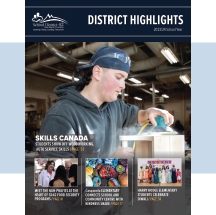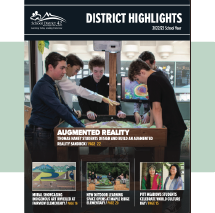A new interactive map launched by the First Peoples’ Cultural Council is a valuable tool for people looking to learn more about Indigenous languages, arts, and cultures.
The launch of the First Peoples’ Map comes as students across Maple Ridge – Pitt Meadows School District 42 are celebrating National Indigenous People’s Day by taking part in virtual celebrations. As June is National Indigenous History Month, many students and teachers in the district are looking to learn more about First Peoples (First Nations, Métis, and Inuit) in B.C. and Canada.
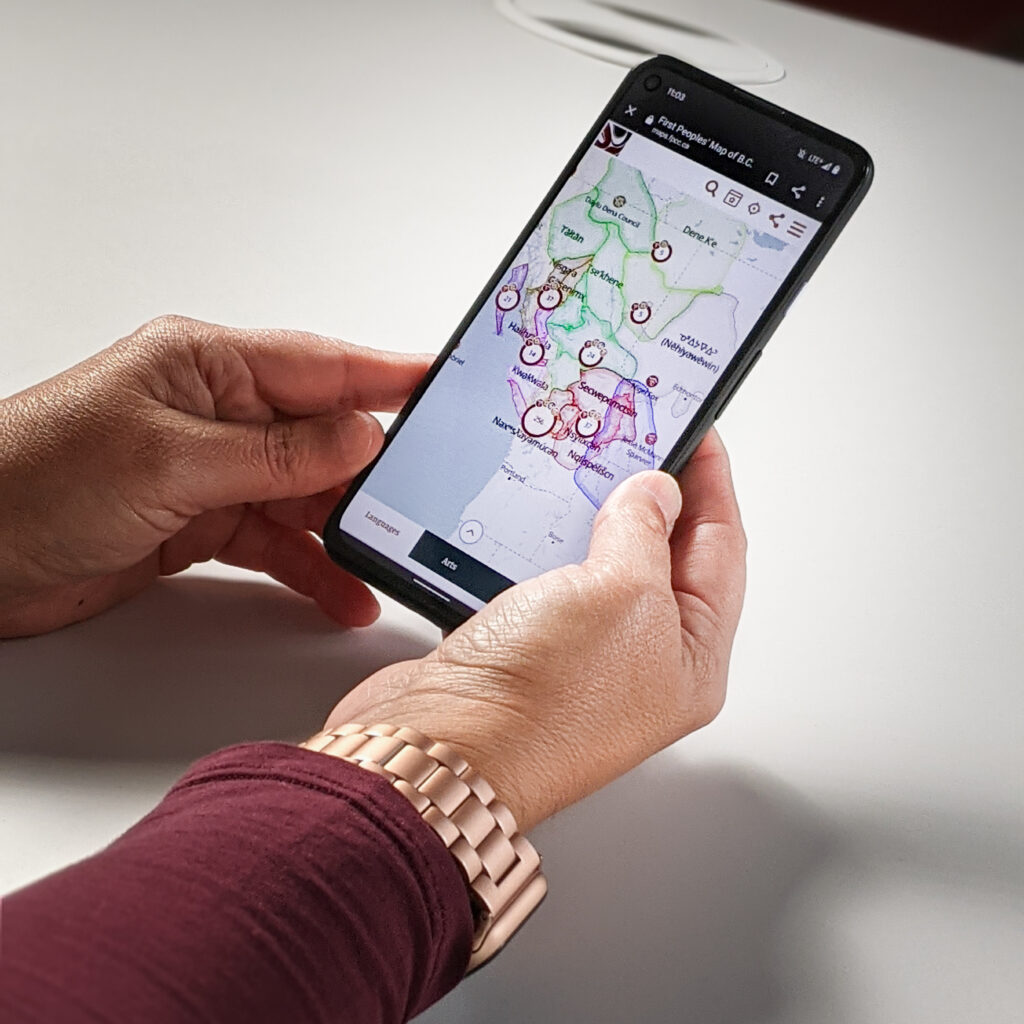
The First Peoples’ Map is available on desktop and mobile devices.
“The First Peoples’ Map is a significant visual representation of the incredible work being done by Indigenous people in B.C. to revitalize and celebrate our unique languages, arts, and cultural heritage,” said Karen Aird, acting CEO of the First Peoples’ Cultural Council. “Our hope is that this map will help non-Indigenous people to better appreciate Indigenous perspectives as one small step towards reconciliation. By combining all of this rich information together in one place, the map reflects an Indigenous perspective by braiding important cultural elements together with the land.”
Visitors are invited to explore the First Peoples’ Map by searching specific geographical locations, browsing the sidebar, or by focusing their search with keywords and filters to listen to audio pronunciations of greetings, find artists, and important cultural sites in their region, and more.
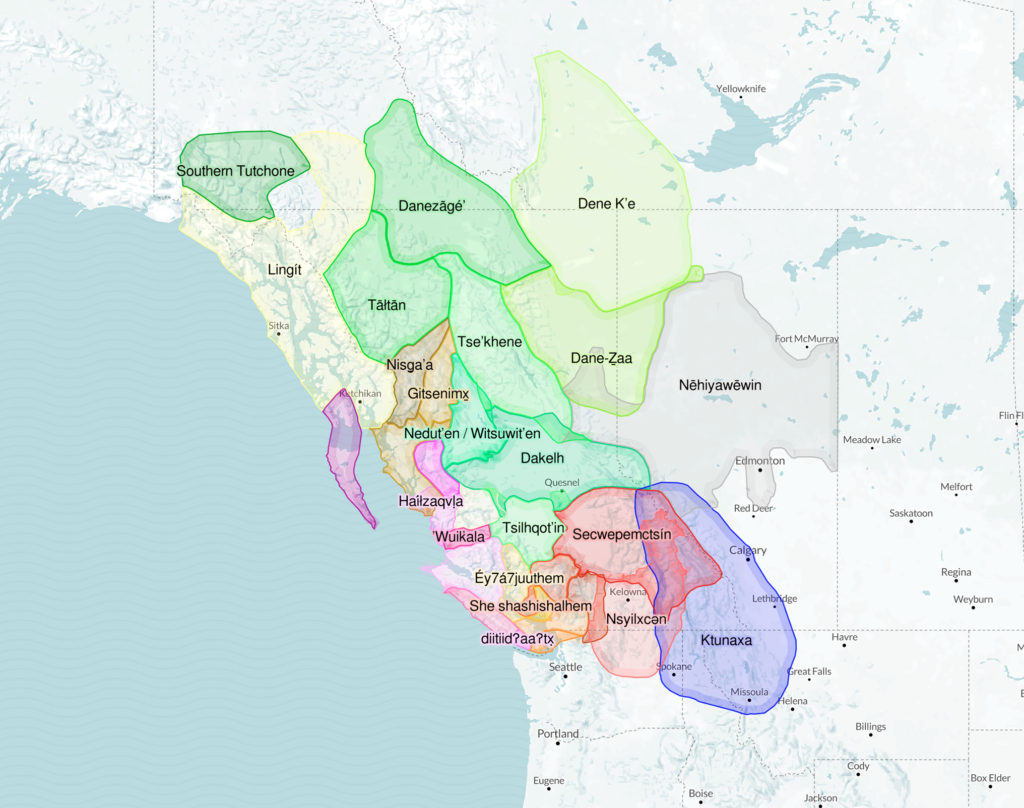
The First Peoples’ Map of B.C.
The language layer displays all 204 First Nations communities and language regions. Users can hear the pronunciation of language names, greetings, places, and more. It includes data on 34 First Nations languages and more than 90 dialects from FPCC’s 2018 Report on the Status of B.C. First Nations Languages.
The arts layer can be explored to find Indigenous artists and public art in communities across B.C. Indigenous artists can connect, collaborate, and share digital portfolios featuring artwork, videos, and music Visitors can search for public art, artists in their area, or search by artistic background.
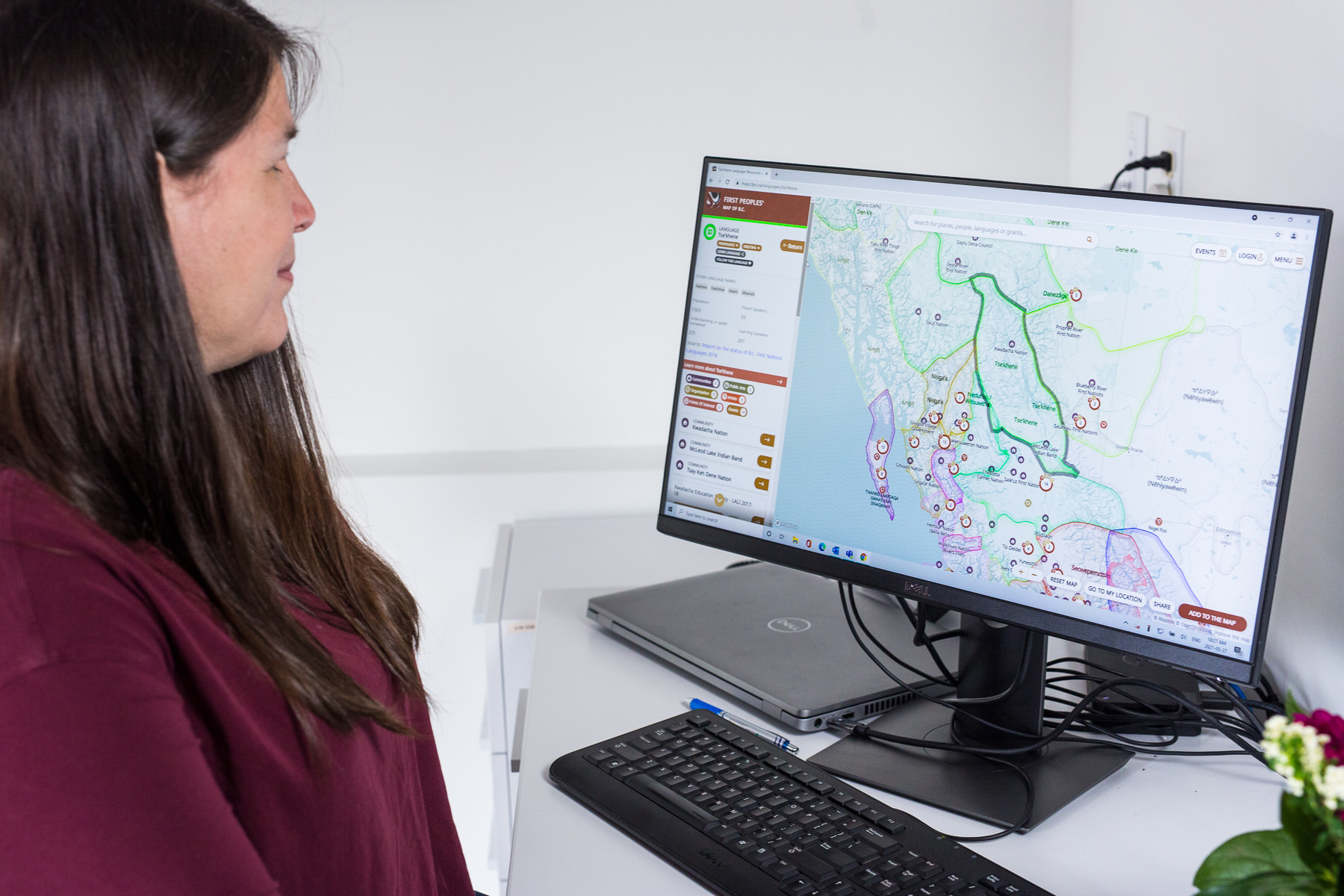
First Peoples’ Cultural Council employee Zandra Paul explores the First Peoples’ Map
The heritage layer demonstrates the connection between the land, environment , and Indigenous cultural heritage. Each point of interest on the map reflects Indigenous peoples’ unique knowledge.
“FPCC’s First Peoples’ Map is an incredibly valuable tool that everyone can easily use and learn from,” said Terry Teegee, regional chief, with the British Columbia Assembly of First Nations. “First Nations in British Columbia celebrate diverse and living languages, arts, cultures, and heritages that this map largely captures.”

